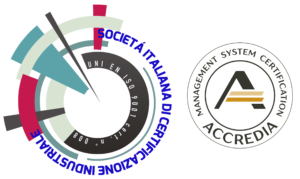The vast experience of Mollificio Modenese and the high level of competence guaranteed by our technical staff allows us to propose ourselves as a partner, offering support in the calculation and design of compression, tension and torsion springs.
The production of the most diverse formats of springs, applicable across the board in various industrial sectors, has made our company one of the main points of reference not only in terms of manufacturing but also of product design. The support in the calculation and design for compression, tension and torsion springs offered by Mollificio Modenese is highly specialised, capable of satisfying even highly complex technical requirements.
The calculation of springs according to the European CEN
The CEN, that is the European Committee for Standardisation defines the springs as “mechanical devices capable of storing energy when deformed and returning energy equivalent when released”. In particular, the technical committee TC407 of CEN deals with the normalisation of elastic components and has recently revised the calculation and design standards of 13906, i.e. cylindrical helical springs produced with wire and circular section bars.
The standard refers specifically to:
- Compression springs
- Tension springs
- Torsion springs
Within each reference standard, there are the relative spring calculation and design formulas. As part of the calculation and design for compression, tension and torsion springs, the 13906 standard defines suitable wires for the production of springs.
The standards are as follows:
- EN 10270-1: for cold drawn and patented carbon steel wire for springs
- EN 10270-2: for spring steel wire hardened and tempered in oil
- EN 10270-3: for stainless steel wire for springs
- EN 12166: for copper wires and copper alloys
- EN 10086: for hot-rolled steels for tempering springs
Within each reference standard, there are the relative spring calculation and design formulas.
Without going into the details of the provisions, we intend to outline the design principles of the springs and conditions that can influence them.
Calculation and design support for compression, tension and torsion springs: the basic principles
Among the basic principles that shall be taken into consideration in the calculation and design for compression, traction and torsion springs, the operating temperature plays a decisive role, because it influences the modulus of elasticity E (Young’s modulus) and that of tangential elasticity G.
In practice, this means that the values of the modules of the materials are considered valid only at room temperature, with negligible variations for the product’s performance.
As it is easy to guess, the elasticity factor plays an essential role in the design of spring, because it directly influences its load. Equally important for a correct calculation is the coefficient linked to the type of load that characterises the spring: the design of the product will depend on whether this load is dynamic, static or quasi-static, in such a way as to define exactly the number of effective “fatigue life” cycles.
What we have illustrated are just some of the factors that Mollificio Modenese‘s technical experts will take into consideration in supporting the calculation and design for compression, tension and torsion springs. These discriminants will also include the stress correlation factor, especially important in the case of dynamically loaded springs, the winding ratio, the spring’s real stress value (stress or strain), its tensile strength and the allowable stress.
Get in touch with our specialists now to receive support for calculation and design for compression, tension and torsion springs.


